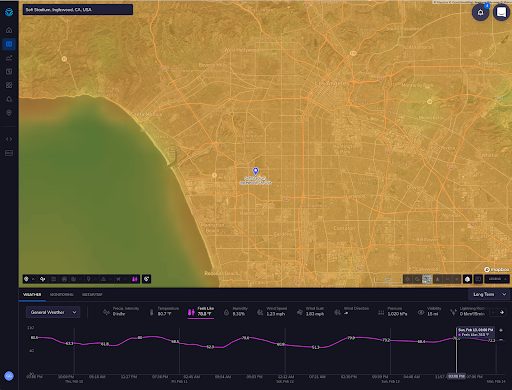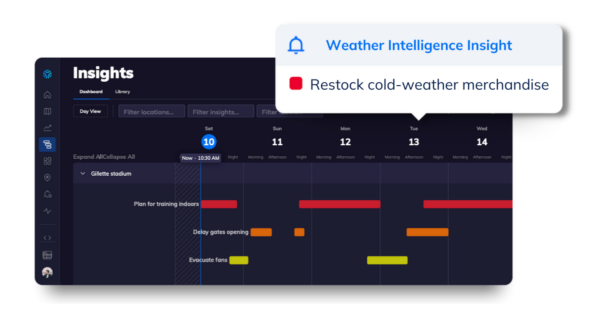As much as possible, the NFL attempts to eliminate the weather from consideration when it comes to the Super Bowl. Most of the time, the NFL’s biggest game takes place in a warm-weather city or in a dome (Super Bowl XLVIII in 2014 at MetLife Stadium in New Jersey being the exception), which neutralizes the impact on weather for the game.
Sunday’s game at SoFi Stadium in Los Angeles will be the 13th time in 56 Super Bowls that the game will take place in California, trailing just the 17 games played in Florida. However, the move to warm-weather cities doesn’t always mean weather doesn’t play a role in the proceedings. In fact, this year’s edition is already facing the potential for unseasonable heat, with a heat advisory issued for the weekend.

Historic Super Bowl Weather Impacts
In 2000, an ice storm made transportation tricky in Atlanta on the day of the Super Bowl, but the game itself was played in the Georgia Dome. There was also more than an inch of snow in Detroit in 2006, but again that game was played inside at Ford Field. The week preceding the Super Bowl was filled with snow and ice in Dallas for Super Bowl XLV in 2011, but it had no impact on the game at the Cowboys’ new stadium.
In reality, the only time the weather actually affected the game itself was in 2007 when Miami was hit by nearly an inch of rain on the day of the Super Bowl. Peyton Manning and the Indianapolis Colts were able to survive the heavy precipitation to outlast the Chicago Bears, though many more will remember Prince’s iconic halftime performance in the rain that year.
How Weather Intelligence Can Support Super Bowl Operations
But gameplay is far from the only element of the Super Bowl impacted by the weather. Operationally, snow, rain, and ice have an effect on everything from the fan experience to demand for concessions— and that’s where weather intelligence like Tomorrow.io can help.
The New England Patriots, for example, are already taking advantage of Tomorrow.io’s platform for this very reason. Whether they’re part of the big game or not, the franchise has been able to use weather intelligence throughout the season to optimize merchandise choices and increase sales by up to 20 percent.

This same approach would have served teams well back in 1972 when the temperature at kickoff in New Orleans was a balmy 39 degrees. Had the league known colder temps were en route, the NFL could have advised teams to stock up on hats, scarfs, warm drinks and other wintry essentials.. On the opposite side of the spectrum, there was probably more of a demand for cold water and beer in 2003 when it was 83 degrees at kickoff for the Super Bowl in San Diego.
These applications aren’t just limited to football. Teams, leagues, and venues across all sporting categories can use weather intelligence to optimize operations in order to maximize revenue, anticipate fan needs, and prepare players for the appropriate conditions.
Learn How Weather-Related Risk is Impacting Your Business














